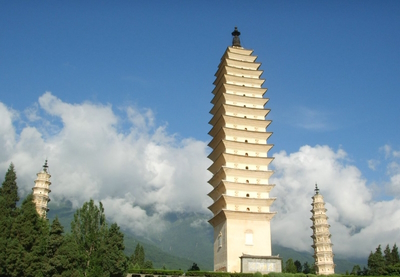Dali Chanshan Mountain and Erhai Lake Scenic Spot

Dali Chanshan Mountain and Erhai Lake Scenic Spot is part of the Tentative list of China in order to qualify for inclusion in the World Heritage List.
Cangshan Mountain and Erhai Lake are located in the western Yunan province. The geological and climatic condition in the Cangshan mountain looks like a painted screen with a distinct vertical distribution of vegetation more than 6000 kinds of plants over all 19 peaks and 18 streams.
Map of Dali Chanshan Mountain and Erhai Lake Scenic Spot
Load mapThe coordinates shown for all tentative sites were produced as a community effort. They are not official and may change on inscription.
Community Reviews
You Wentao
This is a place of extraordinary natural and cultural beauty, with authentic ethnic culture, particularly of the Bai minority ethnicity of China.
The ancient city of Dali was the capital of the Kingdom of Dali, which found its prosperity in the fertile land between Cangshan Mountain and Erhai Lake. The Mountain and Lake shaped the culture of the Bai people as well as the Dali Empire.
As the capital of an once prosperous kingdom, it has a number of imperial sites. With Buddhism as its state religion, the Dali Kingdom left many religious sites with imperial colours. The Chongsheng Temple located at the foot of Cangshan saw 11 Dali Emperors abdicating to become a monk there. Thus the grandeur of the Temple has few comparable counterparts in the entire China. The three pagodas in the Temple compound is a symbol and icon of Dali, the Bai people and, to a large extent, the entire Yunnan province, of which Dali is a part.
Cangshan, especially its snow-capped ridge, is a famous landscape of Dali. The moon over Erhai Lake is also a specialty of the scenery here, both part of the four classical sceneries of Dali, attracting many tourists, domestic and foreign. Thus Cangshan and Erhai have played an important role in the economic development of the Bai people, from agriculture in the past to tourism in modern days.
Community Likes
Site Info
- Full Name
- Dali Chanshan Mountain and Erhai Lake Scenic Spot
- Country
- China
- Added
- 2001
- Type
- Mixed
- Categories
- Natural landscape - Mountain Urban landscape - Asian
- Link
- By ID
Site History
2001 Added to Tentative List
Site Links
Visitors
42 Community Members have visited.